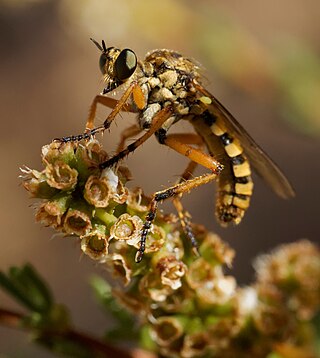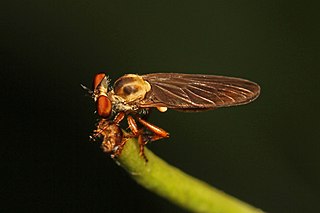
Dasypogoninae is a subfamily of robber flies in the family Asilidae. There are more than 60 genera and 520 described species in Dasypogoninae.

Stenopogoninae is a subfamily of robber flies in the family Asilidae. There are more than 70 genera and 740 described species in Stenopogoninae.
Heteropogon is a genus of robber flies in the family Asilidae. There are at least 60 described species in Heteropogon.

Neoitamus is a genus of robber flies in the family Asilidae. There are at least 60 described species in Neoitamus.

Holcocephala is a genus of robber flies in the family Asilidae. There are at least 40 described species in Holcocephala.

Holopogon is a genus of robber flies in the family Asilidae. There are at least 60 described species in Holopogon.

Stichopogoninae is a subfamily of robber flies in the family Asilidae. There are about 14 genera and at least 230 described species in Stichopogoninae.

Hyperechia is a genus of robber flies in the family Asilidae. They appear large, stout and with legs covered in bristles and appear like carpenter bees in the genus Xylocopa and the resemblance is considered as a case of aggressive mimicry, providing protection from predators. The larvae of the fly feed on the larvae of Xylocopa within their cavity nests in wood. They are mainly found in the African and Madagascan region with about 15 species and two species in Asia.









